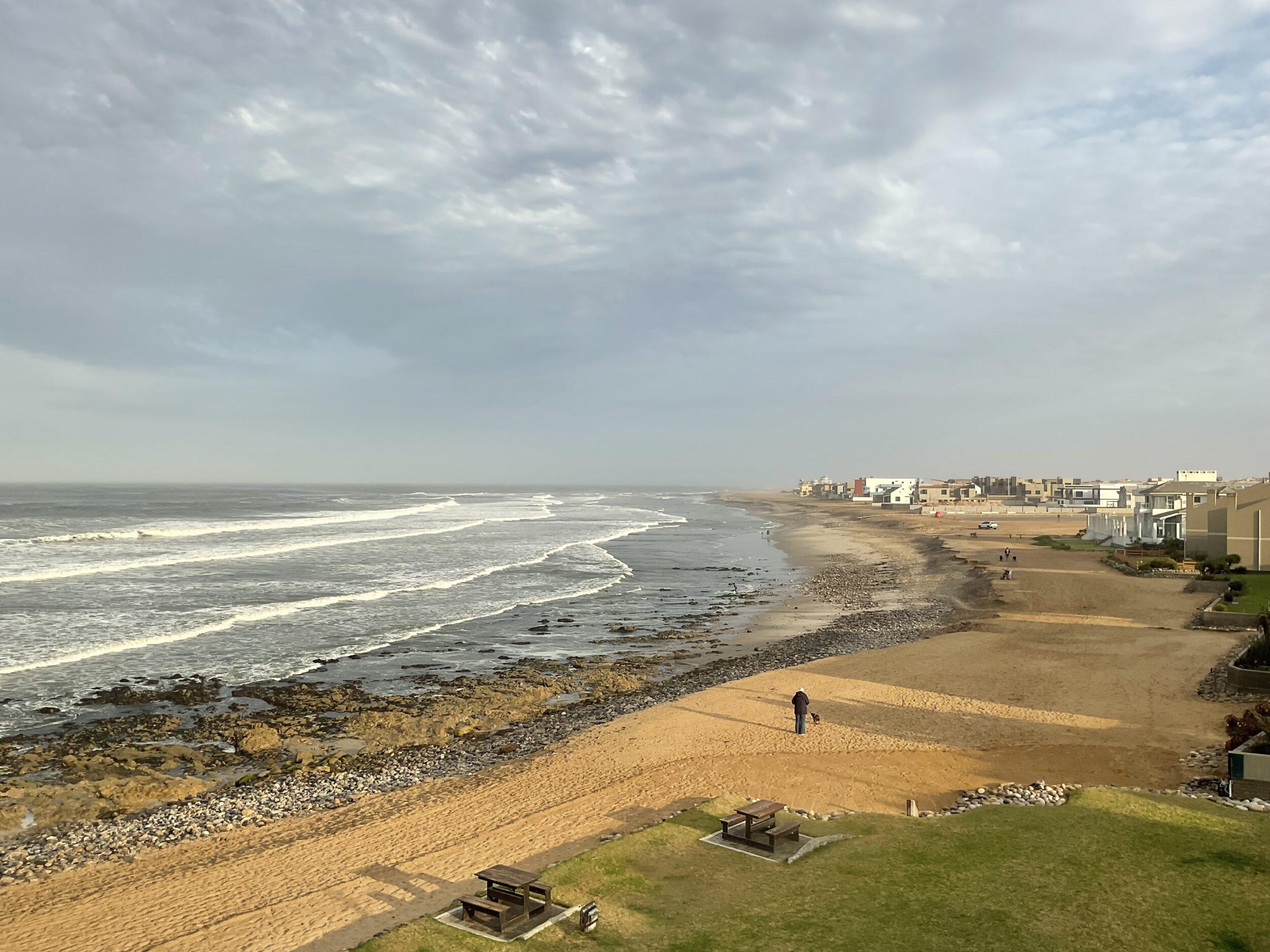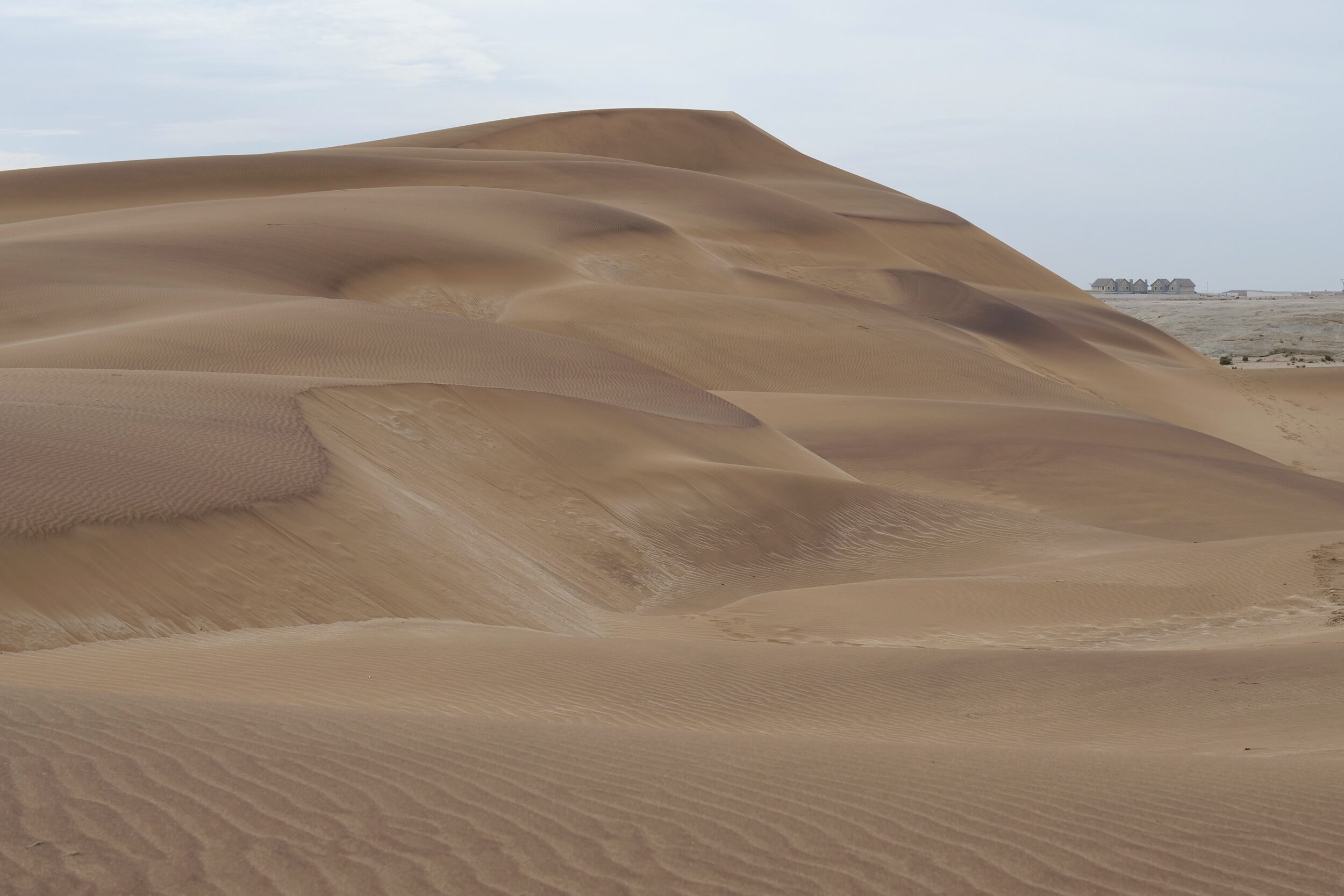Circa 75,000 members of our own species live in Swakopmund, and a great many more visit, as tourists.
Below, you are looking at its beachfront, as viewed from a hotel window at 7. 20 am on 20 November 2022.
Namibia’s third largest city – and its one “seaside resort” – is sandwiched between the chilly, easternmost waters of the Atlantic Ocean and the westernmost dunes of the Namib Desert’s “sand sea”, whence I took the featured image at 5. 11 pm on the previous day.

Generally, Namibia is a hot country, but its coastal fringe is deliciously cool, most of the time; mean daily maxima in Swakopmund range from 18 degrees in August & September, to 23 in February.
Rain hardly ever falls here, but sea-mists frequently roll in from the Atlantic.
Moisture is more “available” to well-adapted animals and plants than would appear “possible” where average annual rainfall is just 16 mm – around one-hundredth of what falls in Lagos, and one-fiftieth of both the Australian Perth & the Scottish one’s’ annual averages.
Looking at the pictured dunes – immediately behind Swakopmund – you may imagine that they are virtually “lifeless”.
You would be very much mistaken, as the next post will illustrate…
